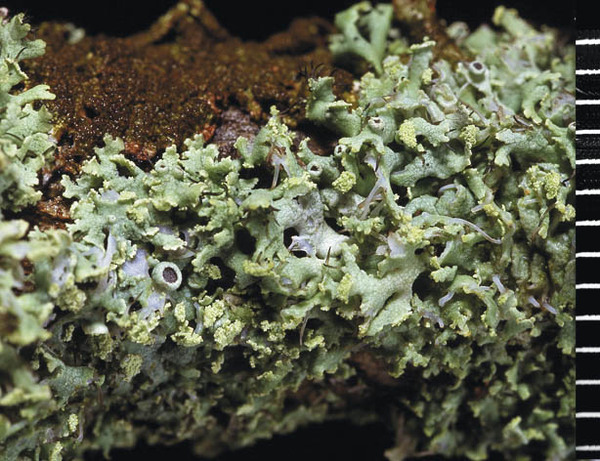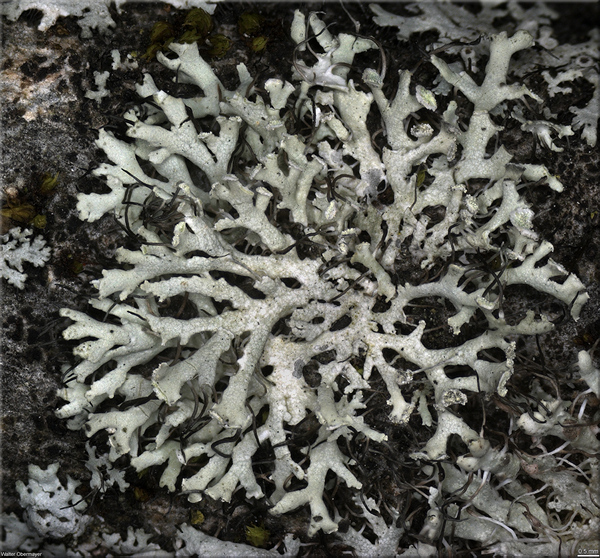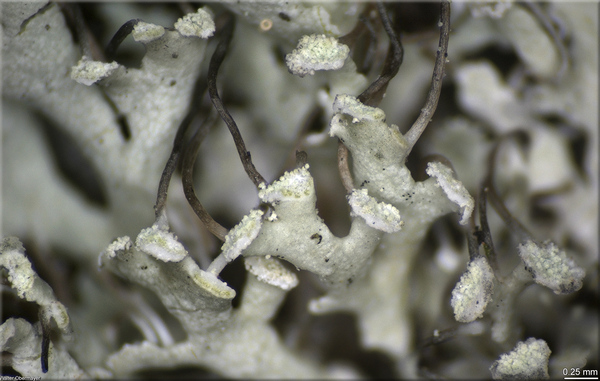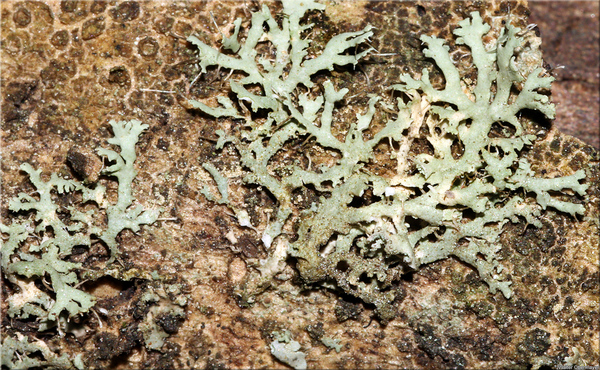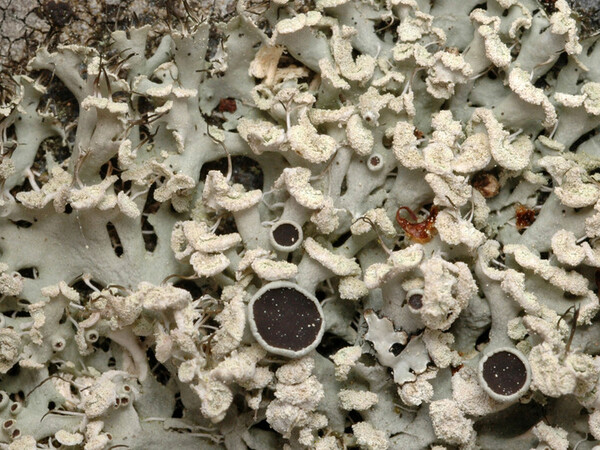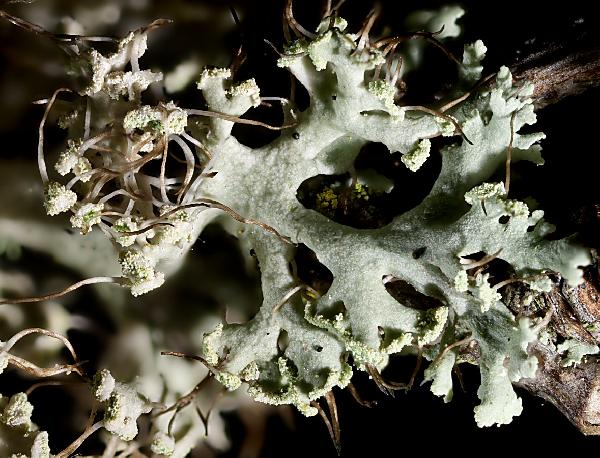Physcia tenella (Scop.) DC.
in Lamarck & de Candolle, Fl. Franç., éd. 3, 2: 396, 1805, nom. cons.. Basionym: Lichen tenellus Scop. - Fl. Carniol., ed. 2, 2: 394, 1772.
Synonyms: Borrera tenella (Scop.) Ach.; Hagenia tenella (Scop.) De Not.; Parmelia stellaris var. tenella (Scop.) Spreng.; Parmelia tenella (Scop.) Ach.; Physcia adscendens var. tenella (Scop.) H. Olivier; Physcia leptalea var. italica B. de Lesd.; Physcia stellaris var. subobscura Nyl.; Physcia stellaris var. tenella (Scop.) Nyl.; Physcia tenella var. marina (A. Nyl.) Lynge
Distribution: N - VG (Castello 1996, 2002, Carvalho 1997, Martellos & Castello 2004, Castello & Skert 2005), Frl (Badin & Nimis 1996, Castello & Skert 2005, Tretiach & Molaro 2007, Bernini & al. 2010, Brackel 2013), Ven (Nimis & al. 1996c, Nascimbene & Caniglia 1997, Lazzarin 1997, 2000, Caniglia & al. 1999, Valcuvia & al. 2000c, Nascimbene 2005c, 2008, 2008c, Nascimbene & Marini 2007, Nascimbene & al. 2008e, 2010b, Brackel 2013), TAA (Nascimbene 2003, 2006c, 2014, Zieger & al. 2003, Gottardini & al. 2004, Nascimbene & al. 2005, 2006, 2006e, 2007b, 2014, 2022, Cristofolini & al. 2008, Zarabska & al. 2009, Nimis & al. 2015), Lomb (Arosio & Rinaldi 1995, Grieco & Groppali 1995, Valcuvia & Brusoni 1996, Brusoni & al. 1997, Zocchi & al. 1997, Roella 1999, Brusoni & Valcuvia 2000, Arosio & al. 2000, 2003, Valcuvia & al. 2003, De Vita & Valcuvia 2004, Anderi & al. 2005, Valcuvia & Truzzi 2007b, Sunil Morgan & al. 2008, Di Silvestro & al. 2009, Furlanetto 2010), Piem (Caniglia & al. 1992, Morisi & Sereno 1995, Arosio & al. 1998, Isocrono & Falletti 1999, Rizzio & al. 2001, Casarini & al. 2000, Piervittori 2003, Isocrono & al. 2004, 2005b, 2006, 2007, Furlanetto 2010, Matteucci & al. 2010, Giordani & Malaspina 2016), VA (Piervittori & Maffei 1996, Piervittori & Isocrono 1999, Valcuvia & al. 2000b, Giordani 2006), Emil (Bassi 1995, Nimis & al. 1996, Valcuvia & Grieco 1995, Valcuvia & Savino 2000, Sallese 2003, Marconi & al. 2006, Cioffi 2009, Benesperi 2009, Malavasi 2014, Fariselli & al. 2020, Brackel 2025), Lig (Castello & al. 1994, Putortì & al. 1999b, Valcuvia & al. 2000, Giordani & al. 2000, 2025, Giordani & Incerti 2008). C - Tosc (Loppi & al. 1992, 1995, 1997, 1997e, 1998b, 2006, Tretiach & Nimis 1994, Loppi & Corsini 1995, Loppi & Putortì 1995, 2001, Loppi 1996, Loppi & De Dominicis 1996, Monaci & al. 1997, Benesperi 2000a, 2011, Stofer 2006, Brunialti & Frati 2010, Pasquinelli & Puccini 2010, Paoli & al. 2012, 2015d, Brunialti & al. 2012b, Brackel 2015, Frati & Brunialti 2023, Fačkovcová & al. 2024), Marc (Gasparo & al. 1989, Nimis & Tretiach 1999, Frati & Brunialti 2006, Brackel 2015, 2025), Umb (Ravera 1998, 1999, Ravera & al. 2006, Panfili 2007, Ciotti & al. 2009, Brackel 2015), Laz (Gigante & Petriccione 1995, Massari & Ravera 2002, Ruisi & al. 2005, Munzi & al. 2007, Ravera 2008b, Zucconi & al. 2013, Brackel 2015, 2025), Abr (Recchia & al. 1993, Olivieri & Pacioni 1996, Olivieri & al. 1997, 1997b, Loppi & al. 1999, Nimis & Tretiach 1999, Brackel 2015, Caporale & al. 2016, Corona & al. 2016, Gheza & al. 2021), Mol (Nimis & Tretiach 1999, Caporale & al. 2008, Ravera & Genovesi 2010, Genovesi & Ravera 2014, Paoli & al. 2015, Brackel 2020, Caporale & Ravera 2020), Sar (Monte 1993, Zedda 1995, 2002, 2002b, Loi & al. 2000, Zedda & al. 2001, Rizzi & al. 2011, Giordani & al. 2013, Cossu 2013, Neuwirth 2018, Brackel & Berger 2019, Di Nuzzo & al. 2022). S - Camp (Ricciardi & al. 2000, Aprile & al. 2003b, Nimis & Tretiach 2004, Garofalo & al. 2010), Pugl (Nimis & Tretiach 1999, Brackel 2011), Bas (Nimis & Tretiach 1999, Potenza 2006, Potenza & al. 2010, Brackel 2011), Cal (Puntillo 1995, 1996, Puntillo & Puntillo 2004, Incerti & Nimis 2006, Brackel & Puntillo 2016), Si (Nimis & al. 1994, Ottonello & Salone 1994, Ottonello & al. 1994, Rambold & al. 1994, Ottonello 1996, Grillo & al. 1996, Ottonello & Romano 1997, Grillo 1998, Merlo 2004, Grillo & Caniglia 2004, 2006, Caniglia & Grillo 2006b, Falco Scampatelli 2005, Brackel 2008b, 2008c, Campisi & al. 2020).
Description: Thallus foliose to subfruticose, heteromerous, dorsiventral, narrow-lobed, loosely attached, mostly in the form of confluent thalli forming irregular patches. Lobes strap-shaped, 0.3-1(-1.5) mm wide, ascending, white to very pale grey, white-maculate owing to breaks in the photobiont layer, with pale, but often dark-tipped marginal cilia and terminal, labriform soralia. Lower surface whitish, with very sparse brown-tipped rhizines towards the base, otherwise erhizinate. Upper cortex paraplectenchymatous; medulla very thin, white; lower cortex prosoplectenchymatous. Apothecia rare, lecanorine, 2-3 mm across, with a brown-black, sometimes pruinose disc and a rather thick, smooth thalline margin. Epithecium brown; hymenium and hypothecium colourless; paraphyses slender, simple or forked in upper part, the apical cells clavate, with a thin, dark brown cap. Asci 8-spored, clavate, the K/I+ blue tholus penetrated by a faintly amyloid apical cushion with parallel or diverging flanks, the wall K/I-, surrounded by a K/I+ blue outer layer, Lecanora-type. Ascospores 1-septate, brown, ellipsoid, thick-walled, (15-)17-21(-23) x 6-10 µm, the wall thickened at apex and at septum, Physcia-type. Pycnidia dark, semi-immersed. Conidia bacilliform, 4-6 x 1 µm. Photobiont chlorococcoid. Spot tests: cortex K+ yellow (reaction often faint), C-, KC-, P- or P+ faintly yellow; medulla K-, C-, KC-, P-. Chemistry: upper cortex with atranorin. Note: a mainly temperate species. Its separation from P. adscendens is not always clear to me: very characteristic specimens, hardly referrable to the latter, are most common in the submediterranean belt, in the mountains of the Peninsula and of the Islands, mostly in semi-natural situations. P. tenella certainly occurs throughout Italy, but it is not so common as the many records could suggest: several of them - especially those from polluted areas of Northern Italy - are probably due to confusion with young or poorly developed specimens of P. adscendens.
Growth form: Foliose, narrow lobed
Substrata: bark and rocks
Photobiont: green algae other than Trentepohlia
Reproductive strategy: mainly asexual, by soredia, or soredia-like structures (e.g. blastidia)
Commonnes-rarity: (info)
Alpine belt: absent
Subalpine belt: absent
Oromediterranean belt: absent
Montane belt: rare
Submediterranean belt: rather rare
Padanian area: extremely rare
Humid submediterranean belt: rather rare
Humid mediterranean belt: very rare
Dry mediterranean belt: absent
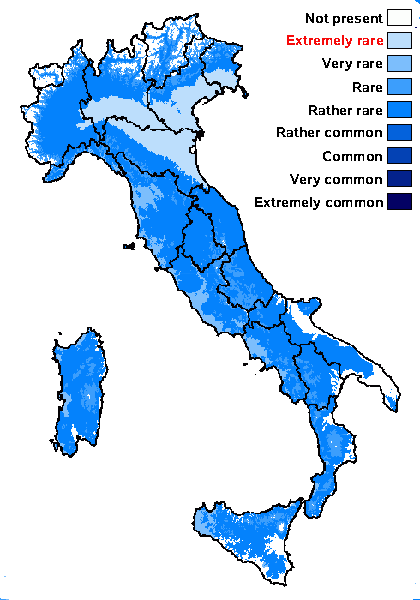
Predictive model
Herbarium samples
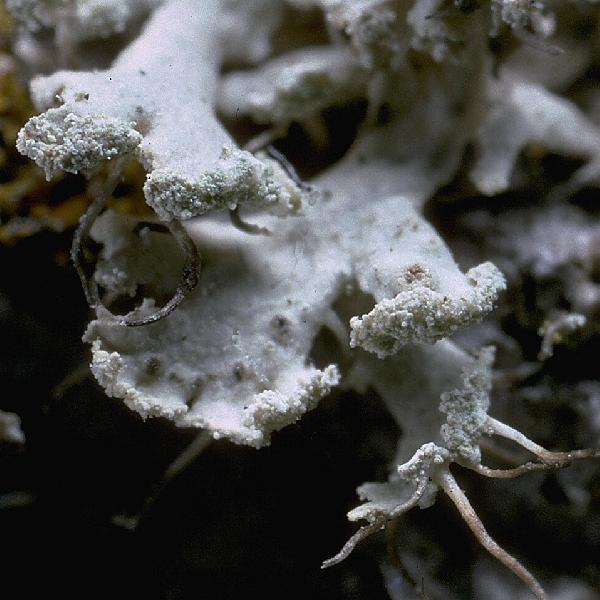
Ulrich Kirschbaum CC BY-SA 4.0 - Source: https://www.thm.de/lse/ulrich-kirschbaum/flechtenbilder
Central Europe.
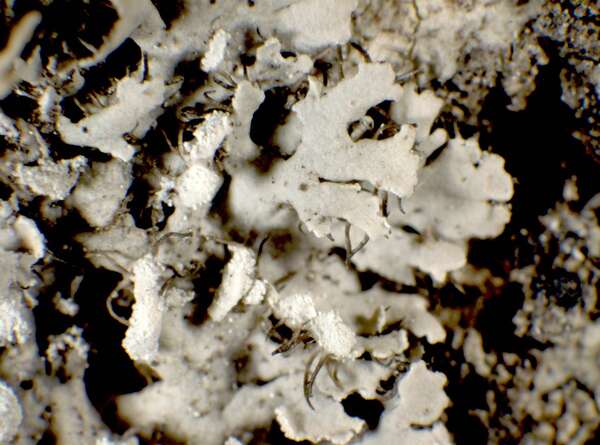

P.L. Nimis; Owner: Department of Life Sciences, University of Trieste
Herbarium: TSB (12157)
2001/12/05
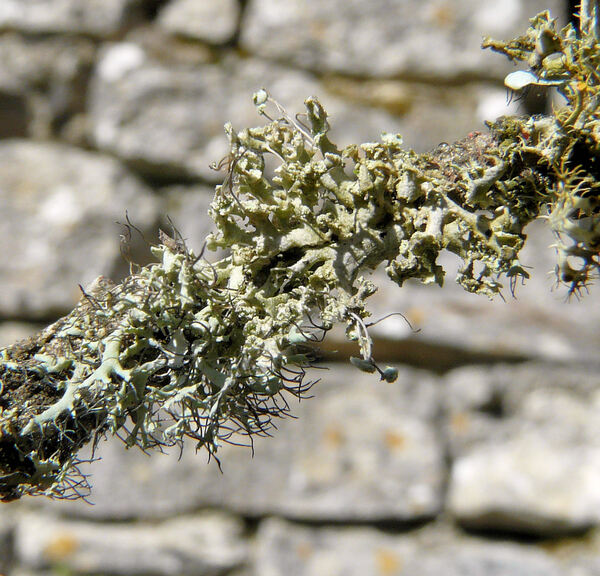

A. Moro; Owner: Department of Life Sciences, University of Trieste
Sicilia, TP, Erice, nei dintorni della città
2008.04.05
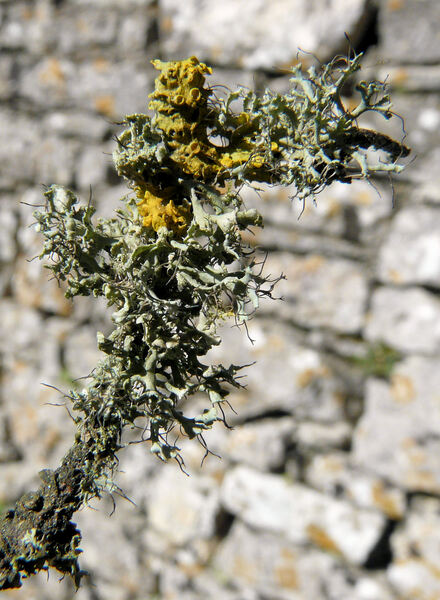

A. Moro; Owner: Department of Life Sciences, University of Trieste
Sicilia, TP, Erice, nei dintorni della città
2008.04.05
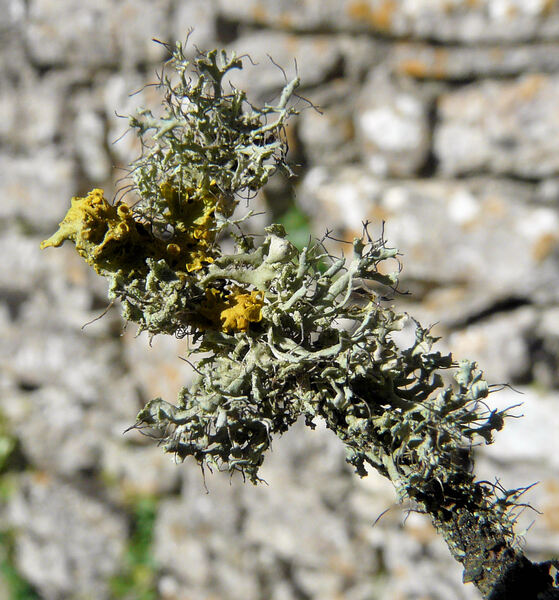

A. Moro; Owner: Department of Life Sciences, University of Trieste
Sicilia, TP, Erice, nei dintorni della città
2008.04.05


A. Moro; Owner: Department of Life Sciences, University of Trieste
Sicilia, TP, Erice, nei dintorni della città
2008.04.05
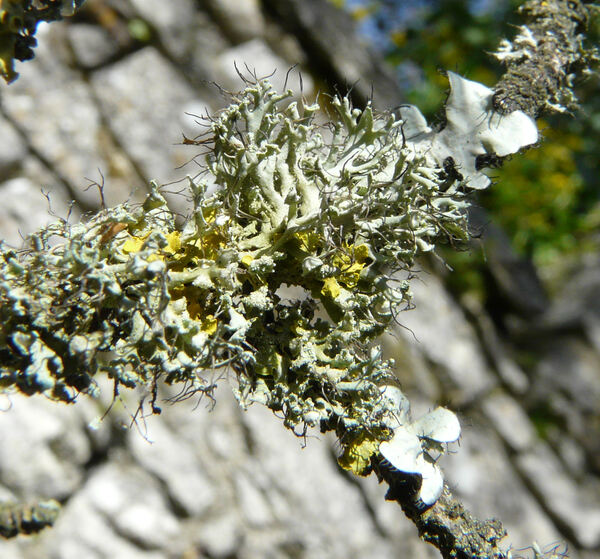

A. Moro; Owner: Department of Life Sciences, University of Trieste
Sicilia, TP, Erice, nei dintorni della città
2008.04.05


A. Moro; Owner: Department of Life Sciences, University of Trieste
Sicilia, TP, Erice, nei dintorni della città
2008.04.05


A. Moro; Owner: Department of Life Sciences, University of Trieste
Sicilia, TP, Erice, dintorni della città
2008.04.05


A. Moro; Owner: Department of Life Sciences, University of Trieste
Sicilia, TP, Erice, dintorni della città
2008.04.05
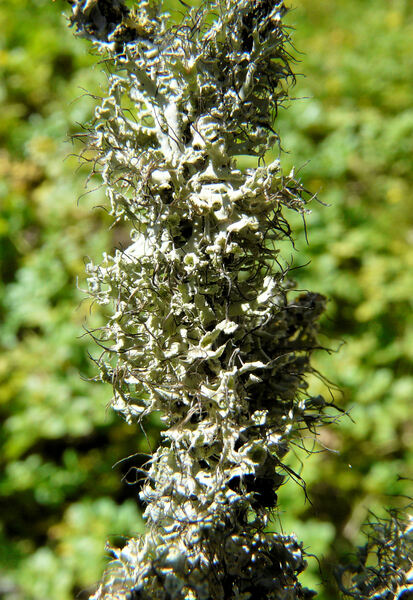

A. Moro; Owner: Department of Life Sciences, University of Trieste
Sicilia, TP, Erice, dintorni della città
2008.04.05


Juri Nascimbene; Owner: Department of Life Sciences, University of Trieste
Italy, Trentino-Alto Adige, Trento, Villa Welsperg, Centro Visitatori del Parco di Paneveggio; altitude: 1030 m
03.04.2009
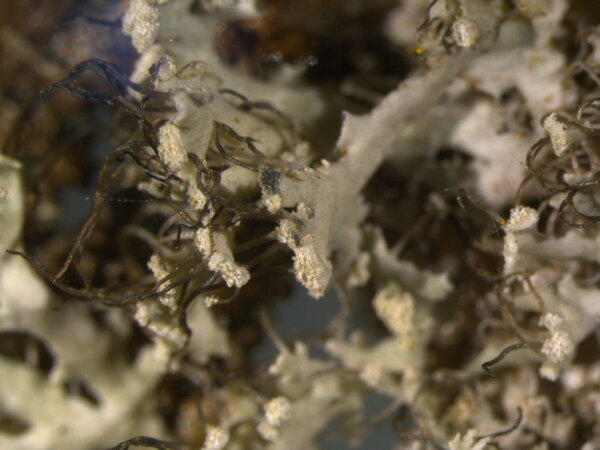

Juri Nascimbene; Owner: Department of Life Sciences, University of Trieste
Italy, Trentino-Alto Adige, Trento, Villa Welsperg, Centro Visitatori del Parco di Paneveggio; altitude: 1030 m
03.04.2009
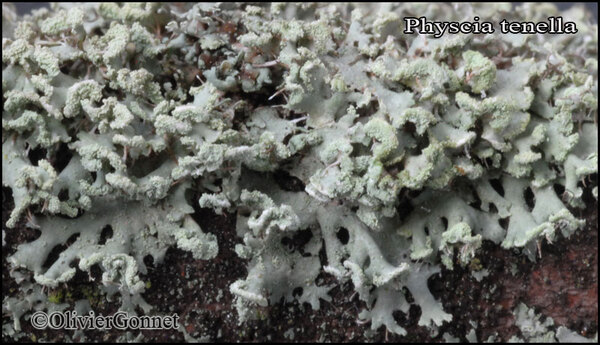
Courtesy Danièle et Olivier Gonnet - Source: https://www.afl-lichenologie.fr/Photos_AFL/Photos_AFL_P/Text_P_2/Physcia_tenella.htm
France, 2012 - Poleymieux-au-Mont-d'Or - Rhône

Courtesy Danièle et Olivier Gonnet - Source: https://www.afl-lichenologie.fr/Photos_AFL/Photos_AFL_P/Text_P_2/Physcia_tenella.htm
France, 2016 - Bord de plage Cala di Roccapina - Sartène - Corse
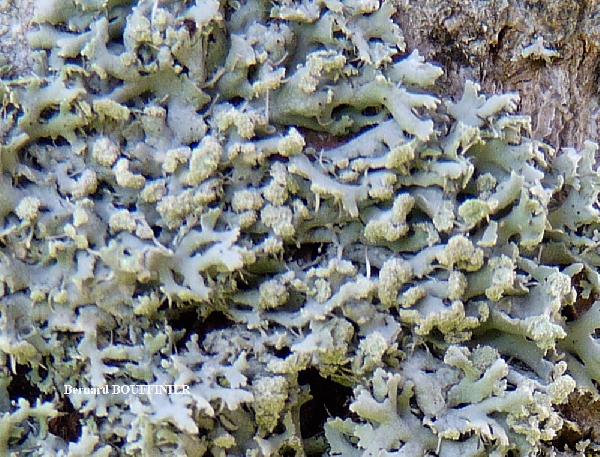
Bernard Bouffinier - Source: http://www.lichensmaritimes.org/index.php?task=fiche&lichen=285&lang=en
France, Châteaulin
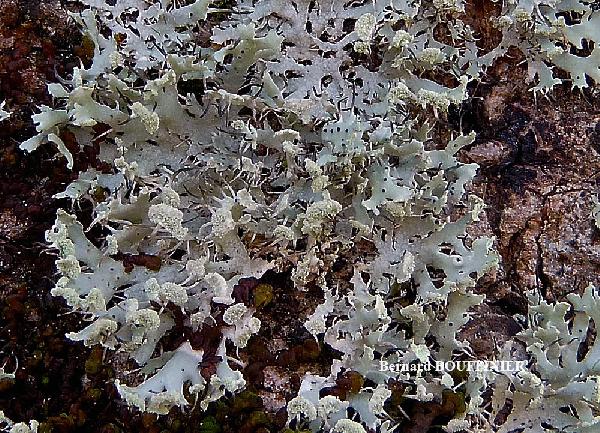
Bernard Bouffinier - Source: http://www.lichensmaritimes.org/index.php?task=fiche&lichen=285&lang=en
France, Le Faou
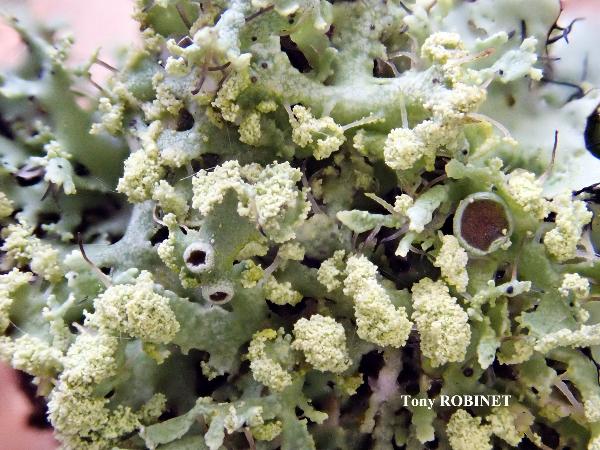
Tony Robinet - Source: http://www.lichensmaritimes.org/index.php?task=fiche&lichen=1177&lang=en
France, Bannalec
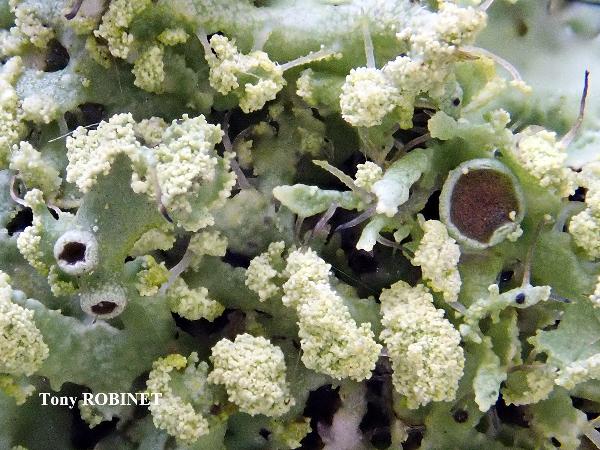
Tony Robinet - Source: http://www.lichensmaritimes.org/index.php?task=fiche&lichen=1177&lang=en
France, Bannalec
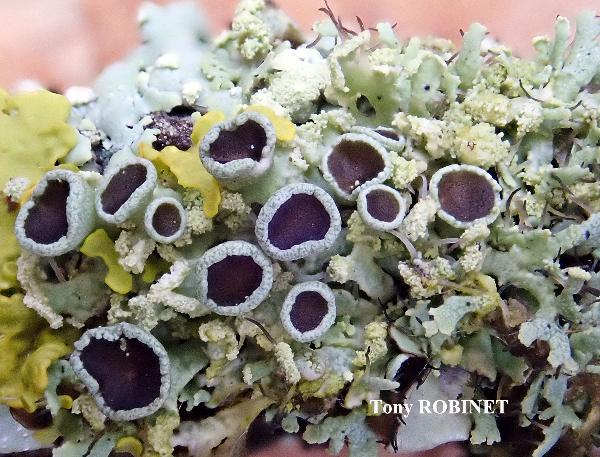
Tony Robinet - Source: http://www.lichensmaritimes.org/index.php?task=fiche&lichen=1177&lang=en
France, Bannalec

Bernard Bouffinier - Source: http://www.lichensmaritimes.org/index.php?task=fiche&lichen=1255&lang=en
France, Tregarvan
on plastic shipwrecks
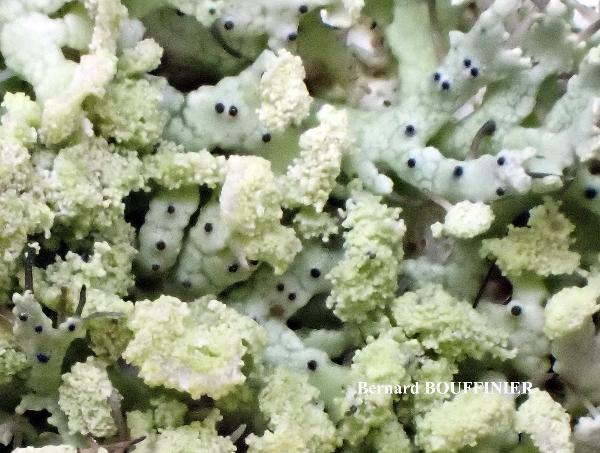
Bernard Bouffinier - Source: http://www.lichensmaritimes.org/index.php?task=fiche&lichen=1255&lang=en
France, Tregarvan
on plastic shipwrecks
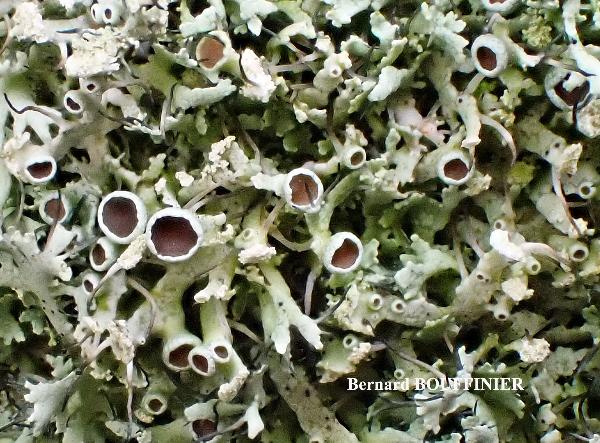
Bernard Bouffinier - Source: http://www.lichensmaritimes.org/index.php?task=fiche&lichen=1255&lang=en
France, Tregarvan
on plastic shipwrecks

Bernard Bouffinier - Source: http://www.lichensmaritimes.org/index.php?task=fiche&lichen=1255&lang=en
France, Tregarvan
on plastic shipwrecks
Growth form: Foliose, narrow lobed
Substrata: bark and rocks
Photobiont: green algae other than Trentepohlia
Reproductive strategy: mainly asexual, by soredia, or soredia-like structures (e.g. blastidia)
Commonnes-rarity: (info)
Alpine belt: absent
Subalpine belt: absent
Oromediterranean belt: absent
Montane belt: rare
Submediterranean belt: rather rare
Padanian area: extremely rare
Humid submediterranean belt: rather rare
Humid mediterranean belt: very rare
Dry mediterranean belt: absent

Predictive model
| Herbarium samples |

Ulrich Kirschbaum CC BY-SA 4.0 - Source: https://www.thm.de/lse/ulrich-kirschbaum/flechtenbilder
Central Europe.


P.L. Nimis; Owner: Department of Life Sciences, University of Trieste
Herbarium: TSB (12157)
2001/12/05


A. Moro; Owner: Department of Life Sciences, University of Trieste
Sicilia, TP, Erice, nei dintorni della città
2008.04.05


A. Moro; Owner: Department of Life Sciences, University of Trieste
Sicilia, TP, Erice, nei dintorni della città
2008.04.05


A. Moro; Owner: Department of Life Sciences, University of Trieste
Sicilia, TP, Erice, nei dintorni della città
2008.04.05


A. Moro; Owner: Department of Life Sciences, University of Trieste
Sicilia, TP, Erice, nei dintorni della città
2008.04.05


A. Moro; Owner: Department of Life Sciences, University of Trieste
Sicilia, TP, Erice, nei dintorni della città
2008.04.05


A. Moro; Owner: Department of Life Sciences, University of Trieste
Sicilia, TP, Erice, nei dintorni della città
2008.04.05


A. Moro; Owner: Department of Life Sciences, University of Trieste
Sicilia, TP, Erice, dintorni della città
2008.04.05


A. Moro; Owner: Department of Life Sciences, University of Trieste
Sicilia, TP, Erice, dintorni della città
2008.04.05


A. Moro; Owner: Department of Life Sciences, University of Trieste
Sicilia, TP, Erice, dintorni della città
2008.04.05


Juri Nascimbene; Owner: Department of Life Sciences, University of Trieste
Italy, Trentino-Alto Adige, Trento, Villa Welsperg, Centro Visitatori del Parco di Paneveggio; altitude: 1030 m
03.04.2009


Juri Nascimbene; Owner: Department of Life Sciences, University of Trieste
Italy, Trentino-Alto Adige, Trento, Villa Welsperg, Centro Visitatori del Parco di Paneveggio; altitude: 1030 m
03.04.2009

Courtesy Danièle et Olivier Gonnet - Source: https://www.afl-lichenologie.fr/Photos_AFL/Photos_AFL_P/Text_P_2/Physcia_tenella.htm
France, 2012 - Poleymieux-au-Mont-d'Or - Rhône

Courtesy Danièle et Olivier Gonnet - Source: https://www.afl-lichenologie.fr/Photos_AFL/Photos_AFL_P/Text_P_2/Physcia_tenella.htm
France, 2016 - Bord de plage Cala di Roccapina - Sartène - Corse

Bernard Bouffinier - Source: http://www.lichensmaritimes.org/index.php?task=fiche&lichen=285&lang=en
France, Châteaulin

Bernard Bouffinier - Source: http://www.lichensmaritimes.org/index.php?task=fiche&lichen=285&lang=en
France, Le Faou

Tony Robinet - Source: http://www.lichensmaritimes.org/index.php?task=fiche&lichen=1177&lang=en
France, Bannalec

Tony Robinet - Source: http://www.lichensmaritimes.org/index.php?task=fiche&lichen=1177&lang=en
France, Bannalec

Tony Robinet - Source: http://www.lichensmaritimes.org/index.php?task=fiche&lichen=1177&lang=en
France, Bannalec

Bernard Bouffinier - Source: http://www.lichensmaritimes.org/index.php?task=fiche&lichen=1255&lang=en
France, Tregarvan
on plastic shipwrecks

Bernard Bouffinier - Source: http://www.lichensmaritimes.org/index.php?task=fiche&lichen=1255&lang=en
France, Tregarvan
on plastic shipwrecks

Bernard Bouffinier - Source: http://www.lichensmaritimes.org/index.php?task=fiche&lichen=1255&lang=en
France, Tregarvan
on plastic shipwrecks

 INDEX FUNGORUM
INDEX FUNGORUM
 GBIF
GBIF
 DOLICHENS
DOLICHENS
